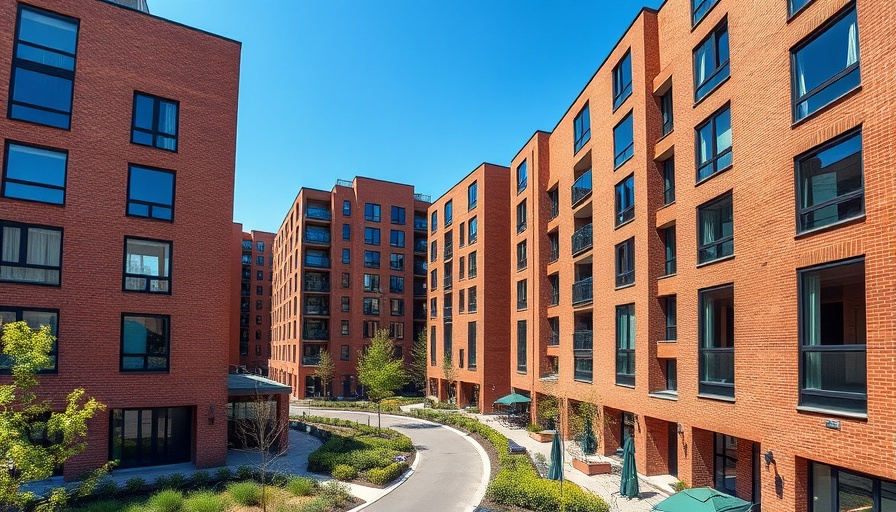
The Vision Behind Manchester Mayfield: A Regeneration Blueprint
Landsec has recently submitted an ambitious proposal to develop the first phase of housing at the £1.4 billion Manchester Mayfield regeneration project, situated next to the bustling Piccadilly Station. The undertaking aims to introduce 879 new homes alongside diverse facilities including shops, cafés, and recreational areas, making it not just a residential hub, but a vibrant community space.
A Green Oasis: Transforming a Brownfield Site
The Mayfield district has undergone a remarkable transformation from previously derelict land into a thriving community area. Mike Hood, representing Landsec, stated that the goal is to create a welcoming environment for everyone, whether they reside, work, or visit the space. This vision aligns closely with broader urban regeneration trends, acknowledging the need for green spaces and communal areas in urban planning. The project has already started its first phase with the Mayfield Park, which opened in 2022, enhancing green space in the heart of the city.
Innovative Urban Development: Homes, Offices, and Transport
Designed by acclaimed architects Studio Egret West and shedkm, the housing development features four interconnected blocks that combine low-rise elements with taller towers, promoting both aesthetic appeal and functional living. This carefully planned layout will bolster Manchester's housing market while simultaneously supporting local businesses by attracting new residents and visitors alike. Additionally, in tandem with the residential units, the project will include 325,000 sq ft of office space designed to accommodate a growing workforce.
London's Blueprint for Mixed Use Development
This initiative mirrors successful projects in cities like London, where mixed-use developments have proven effective in addressing housing shortages and increasing urban density. By including facilities like a health and wellbeing club and a significant multi-modal transport hub featuring the city's largest cycle parking area, Manchester Mayfield is clearly focused on sustainability and accessibility. There is a palpable energy surrounding the project, with many anticipating how this development will shape the future of urban living in Manchester.
The Future of Mayfield: Expectations and Impact on Local Communities
As Landsec forges ahead with the scheme, community engagement will be essential. Ensuring local residents have a voice in the ongoing development plans will not only foster goodwill but might also lead to improved designs more attuned to the needs of those who will live there. As seen in other regeneration projects, community involvement often results in tailored solutions that enhance the local quality of life, thus underscoring the importance of partnerships between developers and residents.
Addressing Housing Shortages: A Necessary Conversation
With UK housing demand escalating, the Manchester Mayfield project represents a crucial step towards resolving the burgeoning housing crisis. The broader implications of these developments reach beyond regional borders; similar projects could provide vital insights into effective urban regeneration. If successful, Mayfield may serve as a model for other cities grappling with housing shortages, advocating for thoughtful, mixed-use developments that multiply social and economic benefits.
Conclusion: A Call for Action in Urban Development
As Manchester embarks on this large-scale redevelopment, builders and contractors should continue to explore innovative strategies that align with the city’s goals of sustainability and community integration. The Mayfield regeneration project exemplifies how targeted efforts in residential construction can lead to substantial transformations in urban landscapes. Stakeholders should be vigilant and proactive, leveraging this moment to contribute to the discourse on modern urban development, focusing on building inclusive, green spaces while addressing the pressing need for housing.
 Add Row
Add Row  Add
Add 




Write A Comment